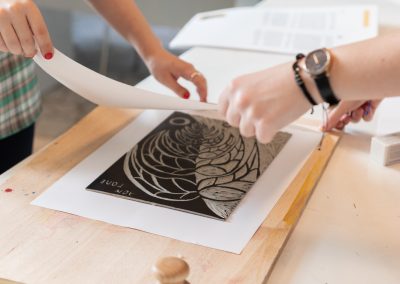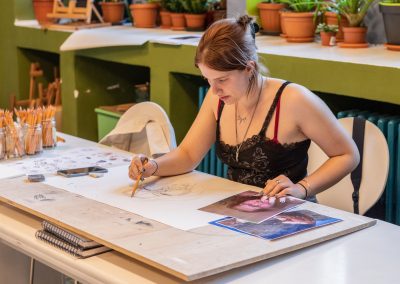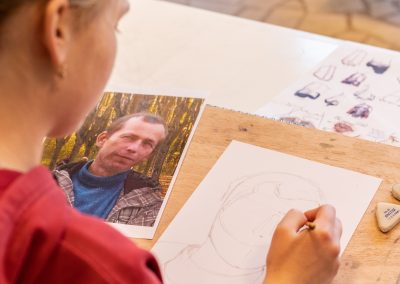About the course
Drawing | Monotype | Screen printing
Drawing and printmaking
The exercises taught will help develop a sensitivity for how to observe and use line, shape, color, texture, rhythm, as well as the spatial organization of elements. Also, the purpose of these exercises is to give participants the ability to use these concepts consciously. The techniques used are specific to easel graphics, using tools such as: graphite pencils, charcoal, ink and pen, watercolors, monotype and screen printing.
DRAWING AND PRINTMAKING
Drawing is the child's instinctive way of expressing his knowledge, emotions or imaginative world. The growing young person quite easily invents symbols to describe the human form, animal forms, and a number of other observable elements (such as the symbol for the sun, tree, house, etc.). Later, there is a need to move beyond recurring symbols and manifest a developing sense of identity. In order for a young person to develop his potential as a draftsman as well as his enjoyment of the creative process, he must learn how to look carefully and curiously at the line, rhythm, texture and tone in the things that surround him and in the works of other artists.
Printmaking increases the child's expressive vocabulary. Activities involving printing provide an additional chance to experiment with the materials used and become aware of the connections and effects that shapes and colors can have on each other. Also, these techniques highlight the prevalence of engraving techniques in the common objects that surround us and help to deepen the knowledge about these image creation techniques.
This course involves a weekly two-hour meeting with each age group

Alina Sferle
Grafician
alina.sferle@fitt.ro
Session duration
2 hours per week
Course duration
The timetable will be communicated to participants by phone or email in the nearby future.
Available spots
Group 1
10 - 14 years old: 10 spots
Group 2
15 - 18 years old: 10 spots
Weekly classes
- Introduction
- Figurative and nonfigurative art
- Points, lines and shapes
- Proportions in figurative drawing
- How to draw from reality
- Autoportrait exercises
- Forms and textures
- Composition
- Sketches and ideation
- Individual work 1
- Individual work 2
- Stamp-making techniques






